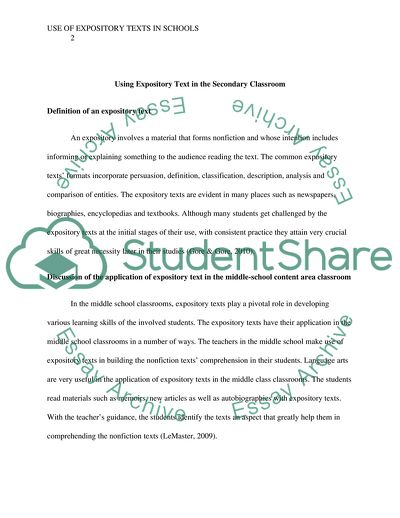Cite this document
(Using Expository Text in the Secondary Classroom Coursework Example | Topics and Well Written Essays - 1250 words, n.d.)
Using Expository Text in the Secondary Classroom Coursework Example | Topics and Well Written Essays - 1250 words. https://studentshare.org/education/1829494-using-expository-text-in-the-secondary-classroom
Using Expository Text in the Secondary Classroom Coursework Example | Topics and Well Written Essays - 1250 words. https://studentshare.org/education/1829494-using-expository-text-in-the-secondary-classroom
(Using Expository Text in the Secondary Classroom Coursework Example | Topics and Well Written Essays - 1250 Words)
Using Expository Text in the Secondary Classroom Coursework Example | Topics and Well Written Essays - 1250 Words. https://studentshare.org/education/1829494-using-expository-text-in-the-secondary-classroom.
Using Expository Text in the Secondary Classroom Coursework Example | Topics and Well Written Essays - 1250 Words. https://studentshare.org/education/1829494-using-expository-text-in-the-secondary-classroom.
“Using Expository Text in the Secondary Classroom Coursework Example | Topics and Well Written Essays - 1250 Words”. https://studentshare.org/education/1829494-using-expository-text-in-the-secondary-classroom.


